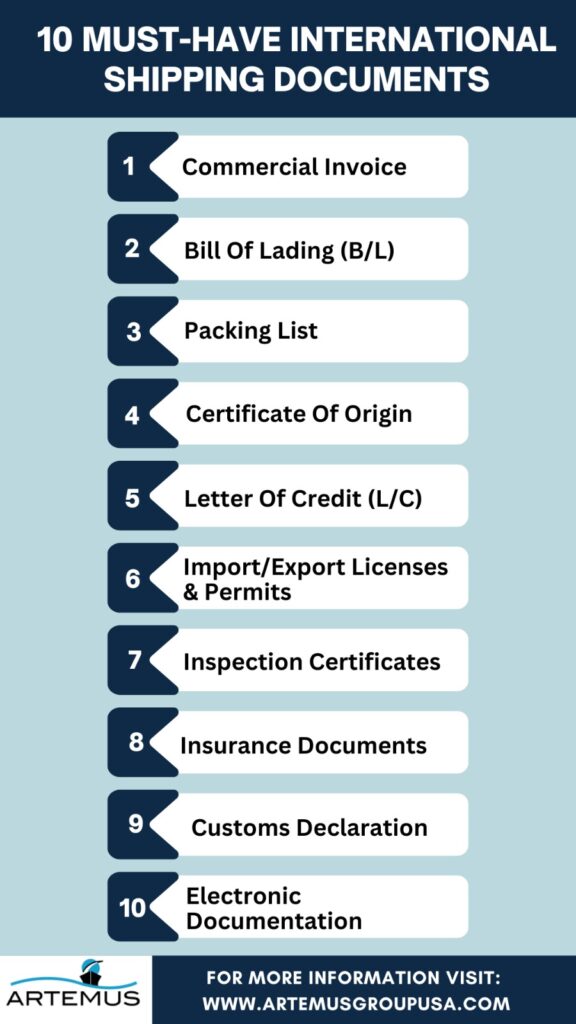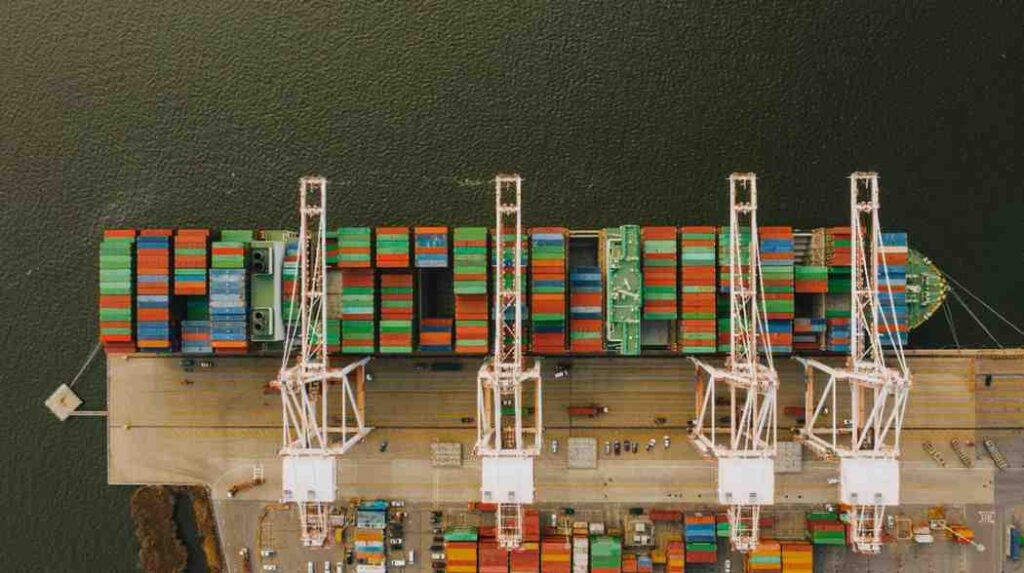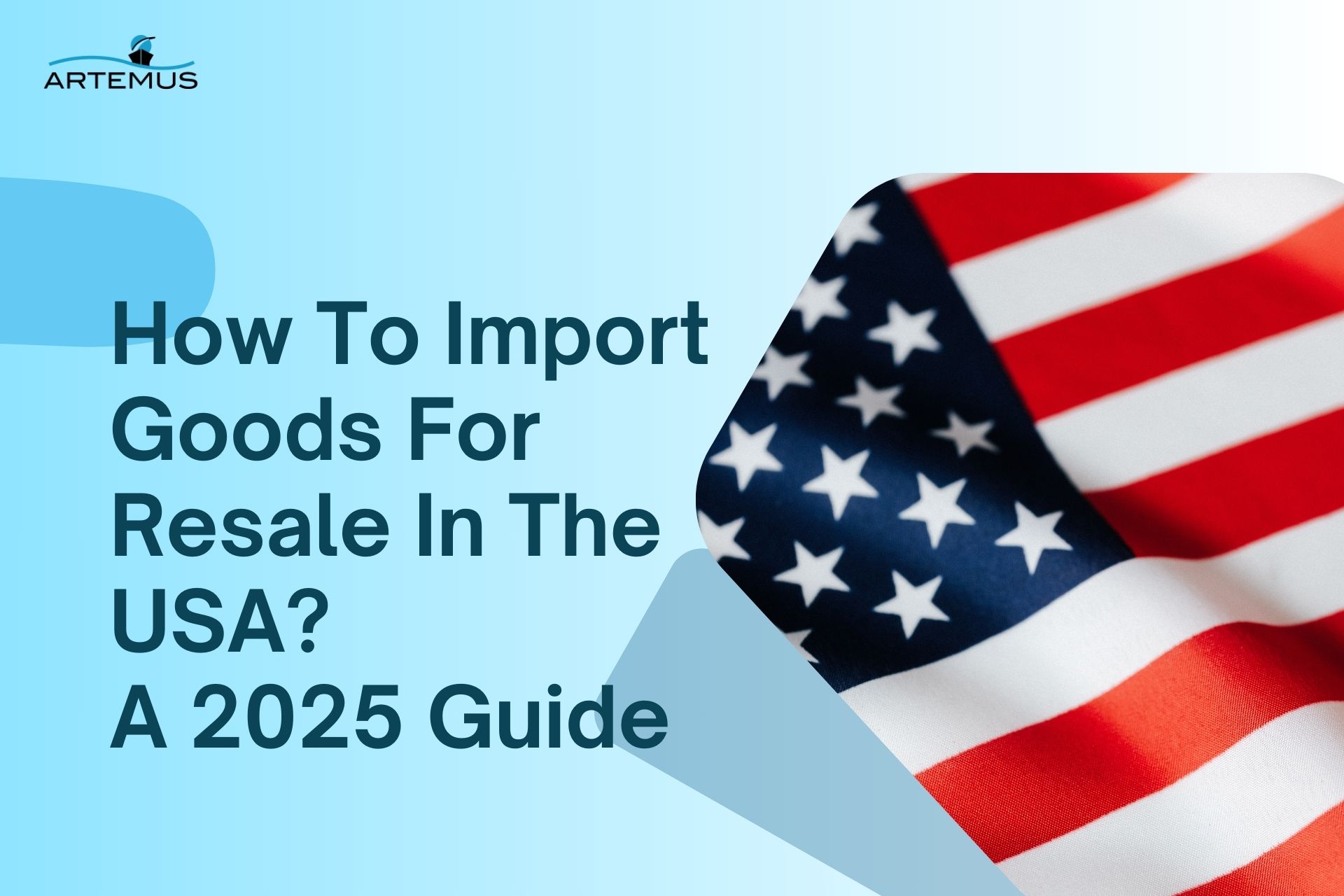
What Is Inbound Logistics & Outbound Logistics? A 2025 Guide
In the dynamic world of supply chain management, understanding the nuances of inbound and outbound logistics is crucial for operational

Let’s delve into the essential paperwork that keeps the wheels of global commerce turning smoothly. In the dynamic world of international trade, the proper handling and preparation of shipping documents are paramount for ensuring the efficient movement of goods across borders while staying compliant with various regulations. From commercial invoices to certificates of origin, each document serves a vital purpose in the complex tapestry of logistics.
In this blog, we’ll explore the significance of key shipping documents, their contents, and best practices for handling them. Additionally, we’ll shed light on the transformative role of technology in modernizing document management processes, particularly through electronic documentation solutions.
As we embark on this journey, we’re excited to announce that Artemus Transportation Solutions stands ready to support businesses with their ISF (Importer Security Filing) and AMS (Automated Manifest System) software.
Table Of Contents

When it comes to international shipping, proper documentation is crucial to ensure smooth transactions and compliance with regulations. Here’s a breakdown of essential shipping documents:
Each of these documents plays a crucial role in facilitating smooth and efficient international shipping transactions, ensuring compliance with regulations, and minimizing risks for all parties involved in global trade.
Related: ISF Form (Import Security Filling): Elements & Top Practices
Navigating the complex world of international shipping involves much more than just moving goods from one point to another. A crucial aspect that often determines the success and efficiency of these transactions is documentation. Let’s delve into why documentation holds such significance in international shipping:
Documentation ensures adherence to legal requirements imposed by both exporting and importing countries. Failure to comply with these regulations can lead to delays, fines, or even the seizure of goods.
Accurate and complete documentation facilitates seamless customs clearance processes, minimizing the risk of delays at ports of entry and exit. Proper documentation also reduces the likelihood of disputes or inspections by customs authorities.
Comprehensive documentation, including insurance papers, provides protection against potential risks such as loss, damage, or theft during transit. This helps mitigate financial losses and ensures that both buyers and sellers are adequately covered.
Detailed documentation enhances transparency in transactions, providing a clear record of the terms, conditions, and responsibilities of all parties involved. This fosters trust and accountability throughout the supply chain.
Certain documents, such as the Bill of Lading and Letter of Credit, play a crucial role in facilitating the transfer of ownership and ensuring payment for goods. These documents provide security and confidence to both buyers and sellers, particularly in international transactions involving unfamiliar parties.
Documentation, including certificates of origin and inspection reports, supports trade facilitation efforts by establishing the origin, quality, and compliance of goods. This promotes smoother trade flows and encourages international commerce.
In the event of disputes or discrepancies, well-documented transactions provide a basis for resolving issues efficiently and amicably. Clear records help clarify responsibilities and obligations, reducing the likelihood of prolonged disputes.
Efficient documentation practices streamline logistical operations, reducing administrative burdens, and minimizing errors or misunderstandings. Electronic documentation further enhances efficiency by enabling faster processing and sharing of information
Related: How To Start A Freight Forwarding Business? 10 Easy Steps
In the fast-paced world of international shipping, efficient document management is crucial for maintaining smooth operations. Here are five tips to help you navigate the seas of paperwork with ease:
1. Go Digital: Embrace digital document management systems to reduce paper clutter, streamline processes, and ensure documents are easily accessible from anywhere in the world.
2. Standardize Naming Conventions: Establish clear and consistent naming conventions for your documents to make them easy to identify and retrieve quickly. This simple practice can save valuable time and prevent confusion.
3. Automate Routine Tasks: Utilize automation tools to streamline routine tasks such as document routing, approval workflows, and notifications. Automation frees up time for your team to focus on more strategic activities.
4. Implement Version Control: Maintain version control for your documents to avoid confusion and ensure everyone is working with the latest revisions. This helps prevent errors and ensures everyone is on the same page.
5. Train Your Team: Provide comprehensive training to your team on document management best practices, including proper storage, organization, and security protocols. Investing in training upfront can save you headaches down the line and ensure everyone is on board with your document management strategy.
Related: How To Choose A Freight Forwarder? 10 Critical Aspects
Artemus Transportation Solutions stands as a leading provider of cutting-edge software solutions tailored to meet the complex needs of modern international shipping. Among their array of offerings, Artemus specializes in ISF (Importer Security Filing) and AMS (Automated Manifest System) software, designed to provide comprehensive compliance support to businesses navigating the intricacies of global trade.
With a deep understanding of the regulatory landscape and a commitment to technological innovation, Artemus empowers importers and exporters to streamline their operations, minimize risks, and ensure adherence to stringent customs regulations. Artemus Transportation Solutions continues to set the standard for excellence in compliance support, equipping organizations with the tools they need to thrive in today’s dynamic international trade environment.
Related: What Is Global Trade Compliance & Its Key Components
The Bill of Lading (B/L) is the most important document for shipping internationally.
International shipments require proper documentation, including a commercial invoice, bill of lading, packing list, and relevant certificates or permits.
The seven steps of international shipping include order placement, export packing, documentation, customs clearance, international transportation, import customs clearance, and delivery to the final destination.

International shipping documents serve as the backbone of global trade, facilitating the movement of goods across borders while ensuring compliance with regulatory requirements. From commercial invoices to bills of lading, each document plays a crucial role in the smooth functioning of supply chains and the success of businesses engaged in international commerce.
As technology continues to evolve, the transition from paper-based to electronic documentation offers opportunities for increased efficiency and transparency. However, the fundamental importance of accurate and timely document preparation remains unchanged.
Related: OTI License Requirements, Costs, Renewal, & Regulations

In the dynamic world of supply chain management, understanding the nuances of inbound and outbound logistics is crucial for operational

In today’s interconnected world, businesses rely heavily on global trade to expand their markets, access new resources, and drive growth.

Importing goods for resale in the USA presents a lucrative business opportunity, but navigating the complexities of U.S. customs regulations,
Get In Touch
Artemus’ Software Solutions for ISF, AMS, Japan AFR, eManifest Canada, & Panama B2B filings.